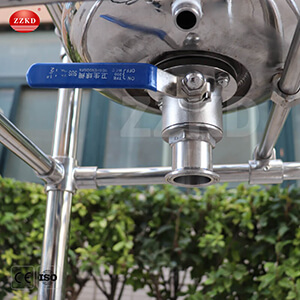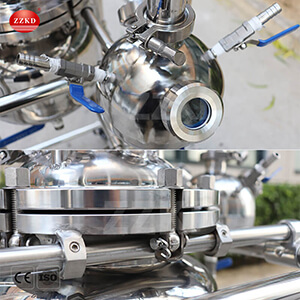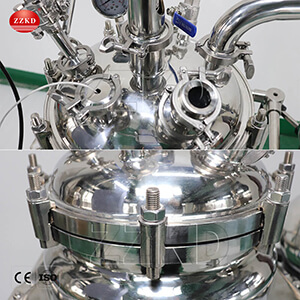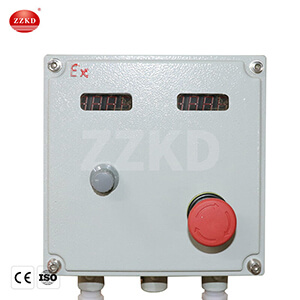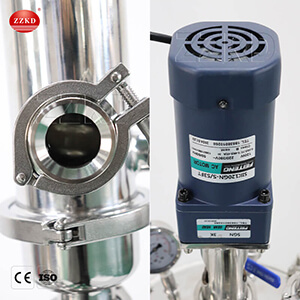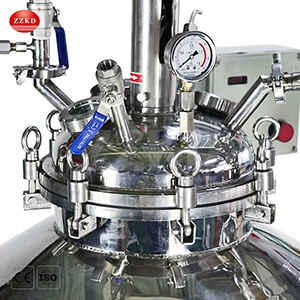Thinking About Buying a Stainless Steel Chemical Reactor?
Are your current reactors causing issues? Need robust equipment for critical processes? Finding the perfect reactor can be a challenge.
Buying a stainless steel chemical reactor means investing in durability, versatility, and efficiency for your lab or production. Key considerations are material grade, pressure/temperature ratings, size, and a trustworthy supplier.
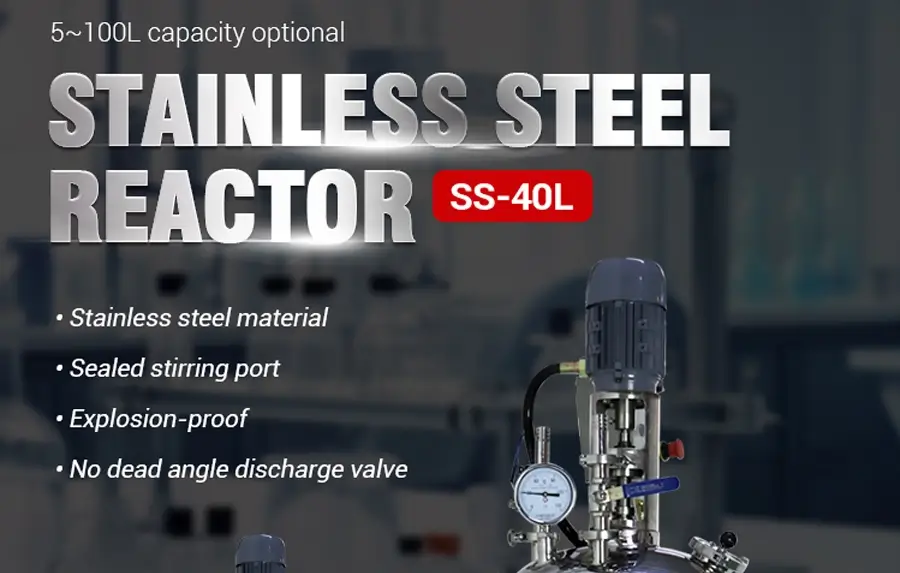
As a company that has specialized in manufacturing and exporting laboratory and production equipment for over 16 years, we understand the importance of choosing the right reactor. It's not just a piece of equipment; it's a core part of your research or production. Let me share some insights to help you make an informed decision. We want you to feel confident when you decide to buy a stainless steel chemical reactor from a dedicated manufacturer like us.
Why is Stainless Steel the Right Material for Your Chemical Reactor?
Choosing reactor material feels risky sometimes? Worried about corrosion or product contamination? The wrong choice can cost you dearly.
Stainless steel is ideal for chemical reactors because of its excellent corrosion resistance, great strength, and ability to handle wide temperature and pressure ranges. This helps ensure product purity and long equipment life.
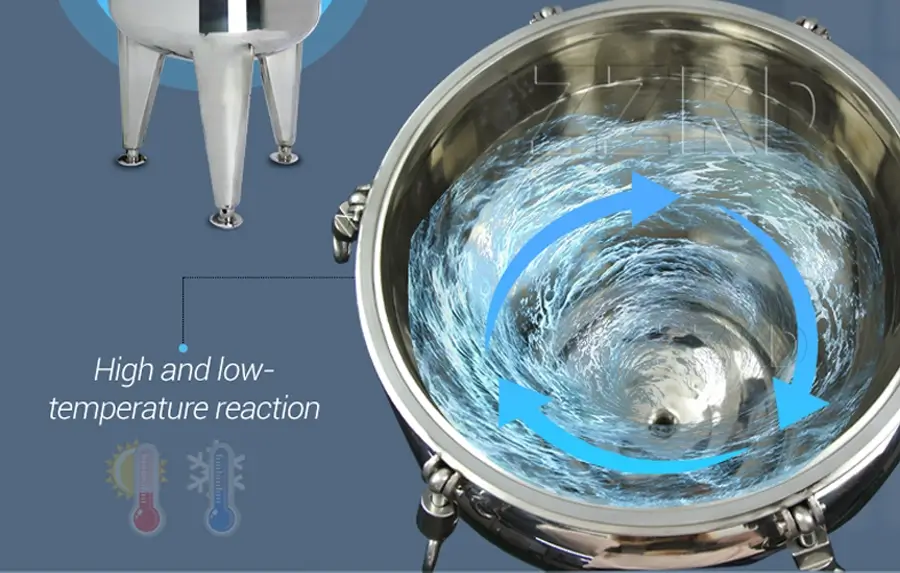
When we talk about stainless steel reactors, we're talking about a material that offers a fantastic balance of properties. I've seen many clients benefit from making this choice.
Unmatched Corrosion Resistance
The primary reason stainless steel, especially grades like 316L, is so popular is its resistance to a wide array of chemicals. This means your reactor won't easily degrade, and more importantly, it won't contaminate your product. I remember a pharmaceutical client who was struggling with batch impurities. After switching to our 316L stainless steel reactors, they saw a significant improvement in product purity and a reduction in failed batches. This resistance is crucial for maintaining the integrity of sensitive chemical and biological processes.
Strength and Durability for Demanding Processes
Stainless steel reactors are tough. They can handle high pressures and extreme temperatures, which are common in many chemical reactions. This mechanical strength means the reactor will last for many years, even under constant use. This durability makes it a cost-effective investment in the long run. We build our reactors to withstand rigorous industrial environments, so you can focus on your work without worrying about equipment failure.
Superior Heat Transfer and Temperature Control
Efficient heat transfer is key for controlling chemical reactions. Stainless steel has good thermal conductivity, allowing for precise temperature management when used with a jacketed design and appropriate heating or cooling fluids. This means you can heat up or cool down your reactions quickly and maintain stable temperatures, which is essential for product quality and reaction efficiency. Many of our designs focus on optimizing this aspect.
Ease of Cleaning and Maintenance
The smooth, non-porous surface of stainless steel makes it easy to clean and sterilize. This is very important in industries like pharmaceuticals, biotechnology, and food processing where hygiene is critical. Less residue buildup means quicker turnaround times between batches and reduced risk of cross-contamination. We always advise on cleaning protocols to help our customers maintain their equipment in top condition.
| Stainless Steel Grade | Key Characteristics | Common Applications |
|---|---|---|
| 304 Stainless Steel | Good general corrosion resistance, good formability. | Food processing equipment, storage tanks, less aggressive chemical environments. |
| 316L Stainless Steel | Superior corrosion resistance (especially against chlorides and acids), low carbon content reduces sensitization. | Pharmaceuticals, biotech, chemical processing, marine applications, cannabis extraction. Our most recommended grade for versatile chemical reactors. |
What Key Features Should You Prioritize in a Stainless Steel Reactor?
Feeling overwhelmed by all the reactor specifications? Unsure which features truly matter for your work? Don't get lost in the technical details.
You should prioritize features like an efficient agitation system, reliable sealing, precise temperature and pressure control, and the right port configurations. These will match your chemical processing needs and ensure safe operation.
Choosing the right features directly impacts your reactor's performance and usability. Over my years in this field, I've seen how a well-specified reactor can make a huge difference in daily operations.
The Heart of the Reaction: Agitation System
The agitator is crucial for mixing your reactants, ensuring uniform temperature, and improving reaction rates. There are many types, like anchor, paddle, turbine, and magnetic stirrers. The best choice depends on factors like the viscosity of your materials and the level of mixing intensity you need. For example, an anchor stirrer is good for high-viscosity fluids, while a turbine agitator provides more vigorous mixing. We often discuss the process details with our clients to recommend the most suitable agitator type and design for their specific application.
Keeping it Contained: Sealing Mechanisms
A reliable seal is essential, especially when working with volatile solvents, hazardous materials, or under pressure or vacuum. Mechanical seals are common for many applications, offering robust performance. For more demanding situations, like very high vacuum or when absolute containment is critical, magnetic seals provide a hermetically sealed environment, preventing any leakage. The choice of seal impacts safety and process integrity. We ensure our seals are rigorously tested.
Precision Control: Temperature and Pressure Systems
Most chemical reactions are sensitive to temperature. Our stainless steel reactors often feature a jacketed design. This allows you to circulate a heating or cooling fluid around the main vessel for precise temperature control. We also integrate ports for temperature sensors. For pressure, accurate gauges are standard. Safety is paramount, so we include features like pressure relief valves and rupture discs to prevent over-pressurization. We often help clients configure complete systems, including our chillers and heaters, for optimal temperature management, ensuring reactions run smoothly within very tight temperature windows.
Connectivity and Accessibility: Ports and Nozzles
Think about everything you need to connect to your reactor. You'll need ports for adding reactants, taking samples, inserting sensors (like pH or level sensors), connecting a vacuum source, or attaching a condenser. Having enough ports, of the right size and type (like Tri-Clamp or flanged), makes the reactor much more versatile and user-friendly. We can customize port arrangements to meet specific experimental or production setups. It's a small detail that can greatly enhance workflow.
How Can You Confirm the Quality and Safety of a Stainless Steel Reactor?
Are you anxious about the reliability of a new reactor? Do safety concerns keep you second-guessing? Never compromise on your team's safety or your process integrity.
You can confirm reactor quality and safety by checking for material certifications (like 316L traceability), ensuring compliance with manufacturing standards (ISO, CE), and asking about the robust testing procedures conducted by the supplier.

Quality and safety are not just buzzwords for us; they are fundamental to how we build our equipment. As an exporter to 87 countries, we adhere to international standards to give you peace of mind.
The Importance of Material Certification
The type and quality of stainless steel used are critical. For demanding applications, you'll want to ensure it's the correct grade, like 316L, known for its superior corrosion resistance. We can provide Mill Test Reports (MTRs) for the stainless steel used in our reactors. These documents trace the material back to its origin and confirm its chemical composition and mechanical properties. This transparency is a key part of our quality assurance. It's your guarantee that you're getting what you paid for.
Manufacturing Standards and Certifications
Look for suppliers who follow recognized manufacturing standards. Our company is ISO 9001 certified, which means our quality management systems are regularly audited and meet international benchmarks. Also, for equipment sold in Europe and many other regions, CE marking is essential. It indicates that the product meets EU safety, health, and environmental protection requirements. Our 16 years of export experience mean we understand these requirements well. These certifications aren't just pieces of paper; they represent a commitment to producing reliable and safe equipment.
Rigorous Testing Before Shipment
Before any reactor leaves our factory, it undergoes a series of tests. These typically include pressure testing (hydrostatic or pneumatic) to ensure the vessel's integrity, seal leakage tests, and operational checks of components like the agitator and any control systems. For some critical applications, non-destructive testing (NDT) methods like dye penetrant testing might be used to check for any surface defects in welds. This thorough testing process minimizes the risk of issues once the reactor is installed at your facility.
Supplier Transparency and Documentation
A reputable supplier will be transparent about their manufacturing processes and quality control measures. They should be willing to provide comprehensive documentation, including user manuals, maintenance guides, and material certificates. For larger or highly customized orders, some clients even opt for factory acceptance tests (FAT) or inspections. We welcome technical exchange and factory visits; it builds trust and ensures you are completely satisfied with your investment.
What Customization Options Really Matter for Your Specific Process?
Do standard, off-the-shelf reactors not quite fit your unique process? Are you frustrated by current equipment limitations? Get a reactor that truly works for you.
Key customization options include specific reactor volumes, varied agitator designs, modified port arrangements, and seamless integration with auxiliary equipment. These ensure your stainless steel reactor perfectly matches your unique process requirements.
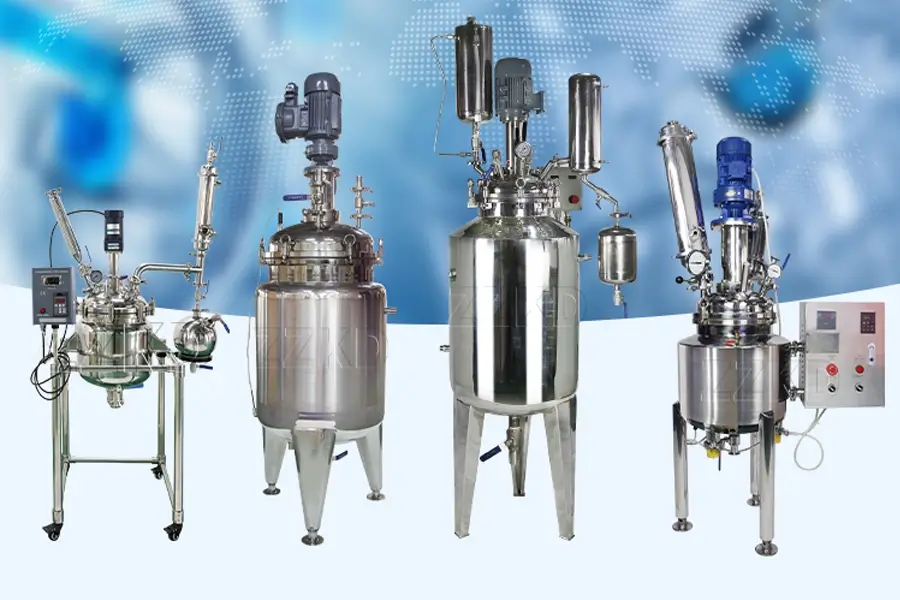
One of the great advantages of working directly with a manufacturer like us is our ability to customize equipment. We have a dedicated R&D team that thrives on creating solutions for specific challenges.
Tailoring the Reactor Volume and Geometry
Reactors come in all sizes, from small benchtop units (like 1L or 5L) for research and development, to pilot-scale systems (50L, 100L), and even larger production vessels. Beyond just volume, the geometry of the reactor, such as its height-to-diameter ratio, can be adjusted to influence mixing efficiency and heat transfer for particular reactions. We always discuss scale-up plans with our clients to ensure the lab reactor can provide meaningful data for larger operations.
Specialized Agitators for Unique Mixing Challenges
While standard agitators cover many needs, some processes require something more specific. This could be a high-shear mixer for creating emulsions, a gas-inducing agitator for hydrogenation reactions, or helical ribbon impellers for highly viscous materials that require gentle but thorough blending. I remember we once designed a reactor with a special anchor agitator that included scrapers for a client working with a product that tended to stick to the vessel walls. This customization dramatically improved their process efficiency.
Adapting Ports and Accessories
The number, size, type, and location of ports can be critical. You might need extra ports for multiple reactant feeds, specialized sensors (like pH, dissolved oxygen, or turbidity probes), sight glasses with lighting for process observation, or specific connections for reflux condensers or vacuum systems. We can modify standard designs or create completely custom port configurations. We also offer a range of accessories like funnels, condensers, and receivers that are designed to integrate perfectly with our reactors.
Integration with Control Systems and Ancillary Equipment
Modern chemical processing often involves a degree of automation. We can design reactors that integrate with PLC control systems for automated monitoring and control of parameters like temperature, stirring speed, and dosing. As a manufacturer of a broad range of laboratory equipment, including chillers, heating circulators, vacuum pumps, and solvent recovery systems, we can provide a complete, turnkey package solution where all components work together seamlessly. This simplifies setup and ensures compatibility, making your entire process more efficient.
How Does a Good Supplier Make Buying a Stainless Steel Reactor Easier?
Are you worried about the complexities of purchasing specialized equipment? Do you need assurance of reliable support after the sale? You don't have to navigate this process alone.
A good supplier simplifies buying a stainless steel reactor by offering expert consultation, transparent communication, strong after-sales support including installation guidance and training, and readily available spare parts.
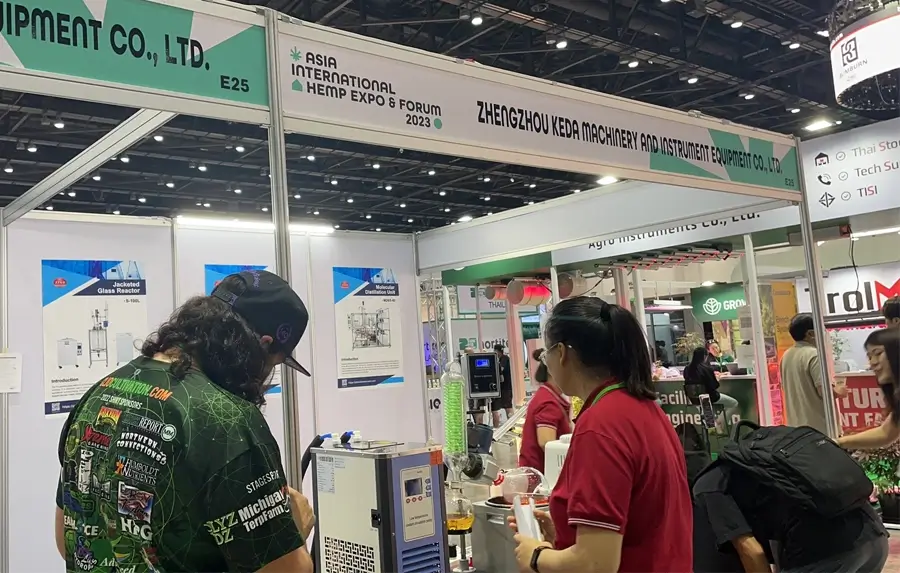
Choosing a supplier is almost as important as choosing the reactor itself. A good supplier acts as a partner, supporting you throughout the lifecycle of the equipment. We've built our reputation on this principle for over 16 years.
Expert Guidance During Selection
With so many options, it can be hard to pinpoint the exact specifications you need. Our sales engineers, many of whom are fluent in English and have technical backgrounds, take the time to understand your application, your process parameters, and your goals. I've seen firsthand how this collaborative approach helps clients avoid over-specifying (and overpaying) or under-specifying and ending up with a reactor that doesn't perform as needed. We aim to provide solutions that are both effective and cost-efficient.
Clear Communication and Transparent Processes
We believe in transparency. This means providing detailed quotations that clearly outline what's included, realistic lead times for manufacturing and delivery, and keeping you updated on the progress of your order. Clear communication prevents misunderstandings and helps build a trusting, long-term relationship. We find this is especially important for our international clients in over 87 countries.
Comprehensive After-Sales Support: Our 24/7 Commitment
Our support doesn't end when the reactor ships. We were the first manufacturer in our field in China to establish a 24/7 after-sales support team. This means you can reach us anytime for assistance. We offer installation guidance and can provide operational training. All our equipment comes with a one-year free maintenance warranty, and beyond that, we provide lifetime service at cost price for parts. This commitment minimizes your maintenance costs and potential downtime, ensuring your equipment operates efficiently for years to come.
Availability of Spare Parts and Technical Documentation
Even the best equipment will need spare parts or maintenance eventually. A good supplier maintains an inventory of common spare parts (like seals, gaskets, and motor components) and can provide them quickly to minimize any disruption to your work. Comprehensive technical documentation, including detailed user manuals and maintenance guides, is also crucial. We ensure all our equipment is supplied with clear, easy-to-understand documentation to help you operate and maintain your reactor effectively.
Conclusion
Choosing the right stainless steel reactor involves understanding materials, features, quality, and supplier support. We hope this guide helps you invest wisely for your success.

